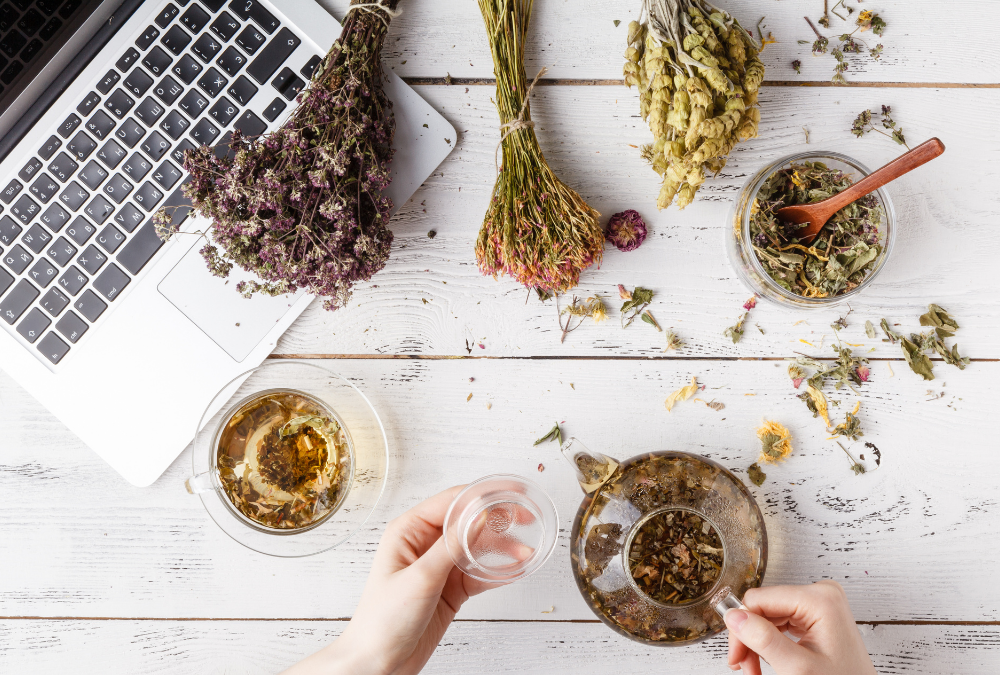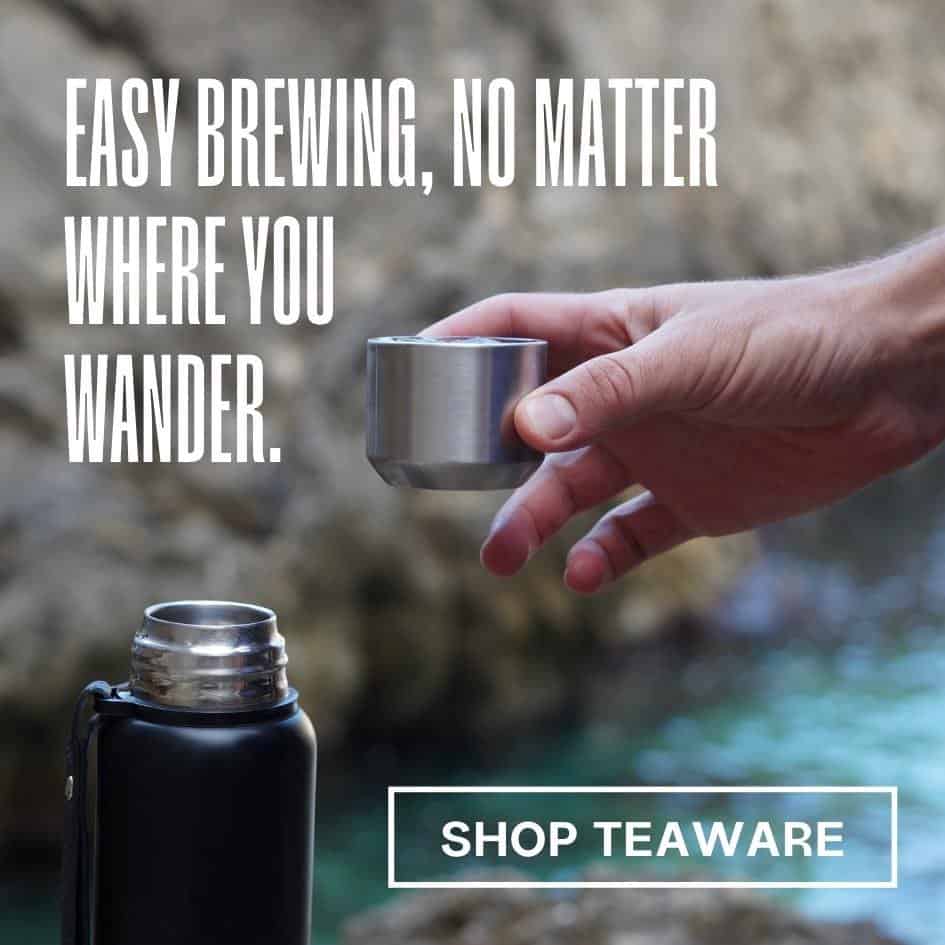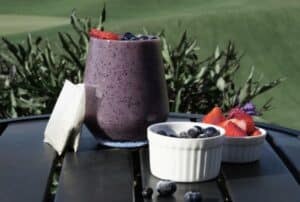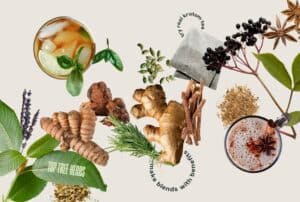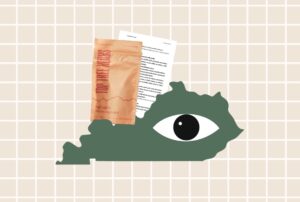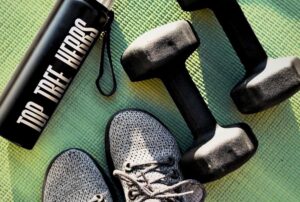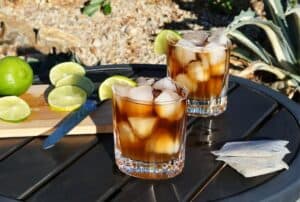Infusions and decoctions are two of the numerous herbal extraction methods you can use to get the beneficial properties from herbs. Both techniques are essential in the world of herbal teas and traditional medicine. However, they differ significantly in terms of their preparation and application. So when it comes to the decision of decoction vs infusion, how do you pick which method to use?
Once you know the typical guidelines for making infusions and decoctions, you can learn to apply the principles to a wide range of plants.
You can also learn the nuances and gray areas of these herbal extraction methods. There are a few exceptions to the rules of making a decoction vs infusion—for example, when you make tea with kratom or tulsi.
By first understanding how decoctions and infusions differ, you can maximize the benefits of herbal remedies and make great-tasting teas.
What is an Infusion?
An infusion is one of the most common methods of preparing herbal teas. To make an infusion, you steep the softer parts of a plant, such as leaves, flowers, or light stems, in hot water.
Coffee, true teas, herbal teas, and mate are some of the most common infusions.
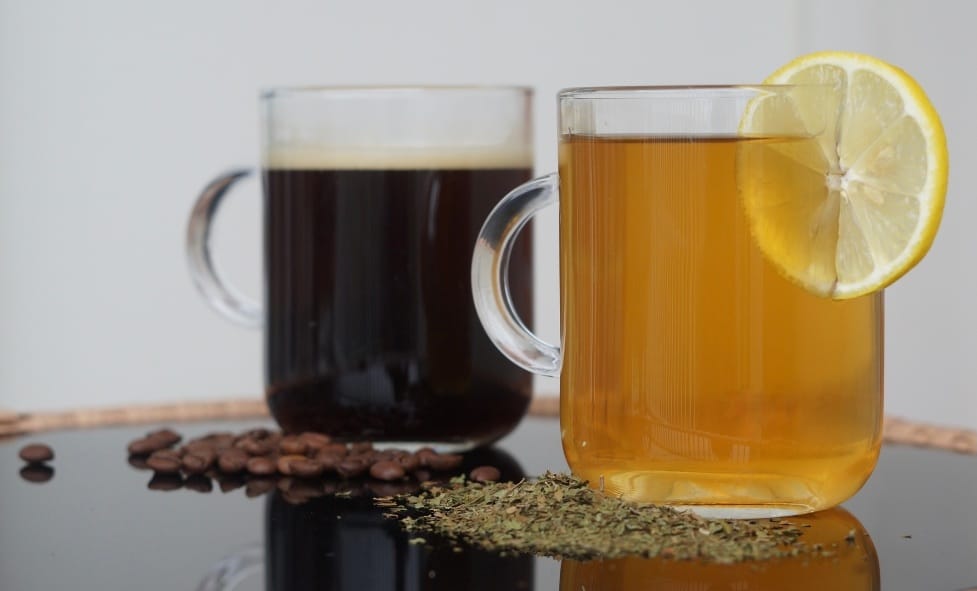
The infusion process is simple. Just boil water and pour it over the herbs. Then, depending upon which herbs you are using, allow them to steep for around 5 to 15 minutes. This method is ideal when you are trying to extract the delicate oils and flavors from the plant material, as you won’t destroying them with direct heat.
Common Uses of Infusions
- Making teas from herbs like chamomile, peppermint, or green tea.
- Extracting essential oils and flavors for culinary uses.
- Preparing gentle remedies for stress relief and relaxation.
What is a Decoction?
A decoction, on the other hand, is a method you can use for tougher plant materials such as roots, bark, seeds, and heavy stems. In this process, the plant material is simmered in water for a longer period. This can range from 15 minutes to several hours. This extended exposure to heat allows for the extraction of deeper essences and compounds that infusions cannot typically access.
Common Uses of Decoctions
- Extracting active compounds from hardy herbs like ginger root, licorice root, ashwagandha, or echinacea.
- Creating herbal remedies.
- Brewing traditional medicinal teas in various cultures.
Decoction vs Infusion: The Key Differences
Plant material used: Infusions are best for delicate parts like leaves and flowers, while decoctions are suited for tougher materials like roots and bark.
Preparation time: Infusions require a shorter steeping time with hot water, whereas decoctions involve a longer simmering process.
Intensity and depth: Decoctions typically yield a stronger, more robust extract. Infusions are gentler, preserving the subtle aromas and oils of the plant.
Ease of preparation: Infusions are straightforward and quick to prepare, making them suitable for daily use. Decoctions require more time and attention, often reserved for specific therapeutic needs.
Tailoring the Extraction Process to the Specific Herbs and Spices
There are some exceptions to the guidelines above. Such exceptions help us understand the decoction vs infusion possibilities even better.
Most herbal teas are infused because this method is sufficient to extract the desired flavors, aromas, and beneficial compounds. For the common herbs and spices used in herbal teas, there’s no need for prolonged boiling.
Plus, when you steep true teas (like black tea and green tea) and some herbal teas for too long, you can extract unwanted flavonoids. This can result as a bitter brew that overpowers any floral or spiced undertones.
However, some herbs with tougher leaves or more resilient active compounds benefit from decoction instead of infusion. One of the best examples is kratom.
Kratom Tea: An Example of an Exception to the Decoction vs Infusion Rules
Kratom tea is made with the leaves of kratom trees. The choice of using the decoction method over the infusion method for kratom leaves stands somewhat as an exception in the broader landscape of herbal teas.
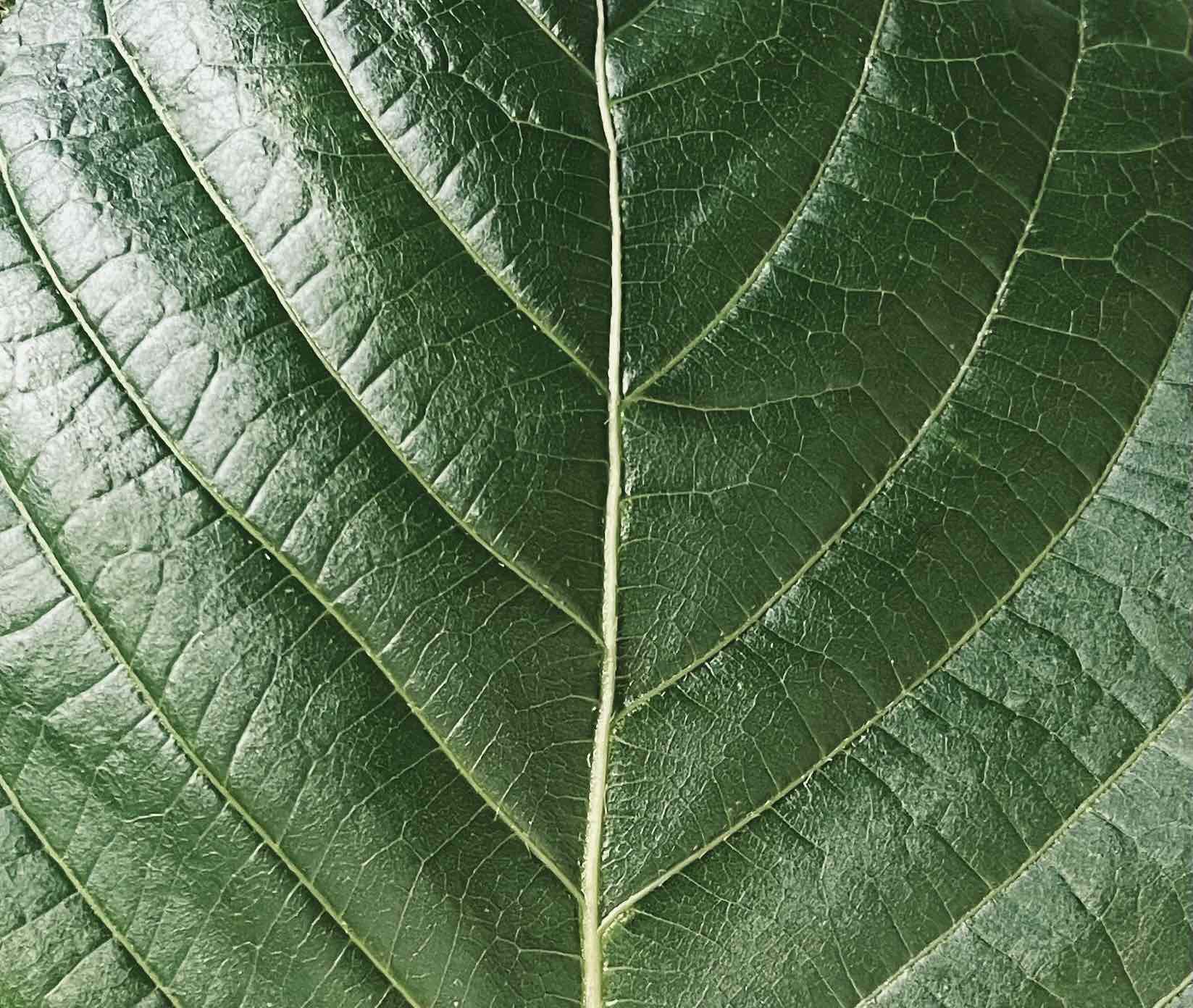
Because you make kratom tea with leaves, you might assume that it’d be best to use the method of infusion instead of decoction to prepare kratom tea. However, that’s not always the case!
So, why would you consider making a decoction with kratom instead of an infusion?
1. Tough Plant Material
The leaves of kratom trees, especially when dried, are quite tough and fibrous. Decoction, which involves simmering the leaves in water for an extended period, is more effective than infusion in breaking down these tough leaves.
This process ensures that the active compounds are thoroughly extracted from the leaf material.
2. Extraction of Active Alkaloids
Kratom contains several active alkaloids that are not very water soluble. These alkaloids are better extracted through the decoction process than the infusion process. The prolonged exposure to heat in decoction helps to release these alkaloids more efficiently than a simple infusion would.
3. Tea Strength
Decoction generally results in a stronger kratom tea. This is best for those seeking the maximum alkaloid extraction from their kratom leaves. A larger kratom serving size or stronger tea is great for getting benefits like rest and relief. Thus, you may find that a decoction provides a more powerful effect.
4. Tradition and Cultural Practices
In many cultures where kratom has been used traditionally, the practice of decocting the leaves is a long-established method. This traditional approach is often preferred and passed down through generations, contributing to its continued use.
5. Customization of Effects
By adjusting the duration and temperature of the decoction process, kratom tea drinkers can customize the strength and balance of the effects they experience from kratom.
In summary, the decoction of kratom may be preferred to make an effective extraction of its active alkaloids from the tough leaf material. This method aligns with traditional practices and allows for customization in the effects.
Before we apply these considerations to other plants, there’s one more interesting thing to explore. There are exceptions to the exceptions to the rules!
How Can You Make Strong Herbal Tea Without Decocting It?
You can still get some of the benefits of decoction without using the stove! Modern tools and scientific principles make it possible to make herbal extractions like kratom tea without simmering.
In Between Infusions and Decoctions
For instance, you can use an insulated thermos instead of a regular mug. A typical ceramic mug allows your water to cool down quickly. This isn’t great for herbs that require more than a few minutes to steep.
A thermos, however, will keep the water you use extremely hot. Then, it can steep at a high temperature for much longer.
On top of that, you can add ingredients to your infusion that aid the extraction process. Adding citric acid to kratom leaves while they steep has been shown to increase the extraction efficiency of kratom’s major alkaloids.
So the next time you make kratom tea, just grab your electric kettle, your favorite thermos, and some lemon juice and start your infusion!
Expert Tips for Infusions and Decoctions
Some plant materials used in decoctions or infusions require even further special extraction methodology.
For example, you may need to slowly heat up the water when starting a decoction to make it possible for the desired compounds to exit the leaf cells.
Renowned herbalist and tea sommelier Sarah Farr explains this in her book, Healing Herbal Teas:
“…placed in a pot with cold water, covered, and slowly brought to a boil. Placing the plants in cold water is essential because tougher plant parts are high in albumin, a protein, which needs to be extracted out of the cells slowly as the water temperature increases. If you put these plants in hot water, the albuminous matter in the plant cells coagulate and can prevent other constituents from leaving the plant cells, potentially limiting the extract” (pg. 15).
So if you’re making a kratom tea decoction, don’t forget to add your kratom tea bags to your water before you start heating it up!
Applying the Principles of Kratom Tea to Other Plants
Kratom tea exemplifies many important principles in herbal preparation. The method of extraction, whether infusion or decoction, depends largely on the physical characteristics of the plant material and the nature of the compounds one aims to extract.
Kratom tea, with its need for a robust extraction process, illustrates the need for a deeper understanding of each herb’s unique properties to maximize its benefits.
Both decoctions and infusions are valuable methods in herbal preparation, each with its unique applications and benefits.
Expanding Your Herbalism Skills
Understanding methods for decoction vs infusion is crucial for anyone interested in herbal extraction methods, whether you’re a tea enthusiast, a home herbalist, or simply someone exploring natural health and wellness.
By choosing the right herbal extraction method for the right plant, you can unlock nature’s full potential. Cheers!
What is the main difference between a decoction and an infusion?
The main difference lies in the method of extraction.
Decoction: simmering tougher plant materials like roots and barks in water. This method is ideal for extracting deep-seated compounds.
Infusion: steeping softer plant parts like leaves and flowers in hot water. Infusing is best for delicate compounds and essential oils.
Can you use the same herb for both decoction and infusion?
Yes, you can either infuse or decoct the same herb depending on the part of the plant you use and the compounds you want to extract.
Commonly, you infuse the leaves of a plant, while you would decoct the plant’s roots.
However, there are also instances where you can infuse or decoct the same part of a plant. You may extract different compounds or get varying strengths when making a decoction vs infusion.
How long should you steep an infusion for optimal benefits?
Typically, you should steep and infusion for about 5 to 15 minutes. However, the exact time can vary based on the herb and your desired strength.
How long should you decoct roots for optimal extraction?
The optimal time for decocting roots can range from 15 minutes to several hours, depending on the hardness of the root and the desired strength of the extract.
Generally, a minimum of 20 minutes of simmering is recommended. Tougher roots may benefit from longer periods.
Is decoction always stronger than infusion?
Decoction is generally stronger in terms of extracting certain active compounds, especially from tougher plant materials.
However, this doesn’t necessarily mean it is always stronger in effect. You may lose or alter some delicate compounds by boiling herbs for a long period.
Can you reuse herbs after infusion? Can you reuse kratom leaves?
While you can technically reuse herbs after an initial infusion, the second infusion will generally be weaker. Most of the essential oils and compounds are extracted in the first steeping.
Some herbs, however, can withstand multiple infusions, but this varies greatly between different types of herbs. You can often reuse crushed leaf kratom for a second or even a third infusion.
Are there any herbs that should not be decocted?
Yes, you should not decoct delicate herbs with volatile oils, like lavender or chamomile. The prolonged heating can destroy their delicate oils.
How do you know which method to use for a particular herb?
The choice of method often depends on the part of the plant and its specific compounds. Researching the herb or consulting with a herbalist can provide guidance. Generally, leaves and flowers are better for infusions, while roots, barks, and seeds are suited for decoctions.
Can you mix herbs for decoction or infusion?
Yes, you can mix different herbs for both decoctions and infusions. However, it’s important to understand the properties of each herb to ensure they complement each other and to achieve the desired effect.
Are there any health risks associated with decoctions or infusions?
While both methods are generally safe, the strength and effects of herbs can vary. Some may interact with medications or have side effects. It’s always advisable to consult with a healthcare professional, especially if you have underlying health conditions or are pregnant.
